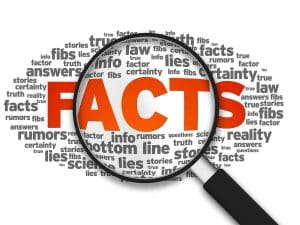When an injured federal employee files a workers’ compensation claim for hearing loss, it is common to find challenges when submitting information to the Office of Workers’ Compensation Programs (OWCP). Injured employees experiencing hearing loss often prematurely file the claim before establishing the extent and nature of their hearing loss. OWCP requires extensive testing results to rule out any other causes and ensure accurate testing. This article will discuss key questions and information to review with your treating physician when gathering medical evidence in support of your claim.
Identifying Cause of Injury
Prior to filing a claim, injured employees must gather information to support their claim for work related hearing loss. As hearing loss can be degenerative, part of everyday activities, or from prior employment before the current federal position, the burden is on the injured employee to establish that they were exposed to noise at work that was injurious. Below is a list of questions that injured employees must address in writing at the time they file the claim. A best practice is to draft a memo to OWCP to submit along with Form CA2, Claim for Occupational Disease or Illness. This memo must include:
- List of employment history by employer, job title, and dates. Include non-federal employment and military service.
- For each job title, describe source of noise, number of hours of exposure per day, and use of any safety devices to protect against noise exposure. State when safety devices were provided.
- Give history of any previous ear or hearing problems.
- Describe any hobbies which involve exposure to loud noise.
- If no longer exposed to hazardous noise at work, give the date of last exposure.
- If you have been examined or treated by a doctor for an ear or hearing problem, provide a medical report and audiograms.
- State whether a claim for workers compensation benefits for this or any other condition affecting ears or hearing was ever filed. If so, give date of claim, name and address where filed, and benefits received.
- Give the date you first noticed your hearing loss. Give date you first related hearing loss to employment, and reason why.
Additionally, injured employees making claims for hearing loss should ensure that that their employing agency provides the following information to OWCP after the claim is filed:
- Description of all workrelated exposure to hazardous noise, including:
- Locations of job sites
- Nature of exposure to noise (machinery, etc.)
- Decibel and frequency level (noise survey report) for each job site
- Period of exposure, hours per day, days per week
- Type of ear protection provided
- SF171, Application for Employment [ed. this is found in your eOPF]
- Position Description and employment record
- All medical examinations pertaining to hearing or ear problems, including preemployment examination and all audiograms
- If the injured employee is no longer exposed to hazardous noise, the date of last exposure and the pay rate in effect on that date.
Finding a Qualified Physician
Each injured employee should be seen for audiological and otological examination. These two consultations should occur on the same day. It is also required that the audiological and otological examinations be performed by different individuals.
- The audiological testing is to be performed by persons possessing certification in audiology from the American SpeechLanguageHearing Association (ASHA), or State licensure as an audiologist. The audiological testing should precede the visit to the otolaryngologist since the latter should have the audiological findings at the time of the examination. The audiological examination should be conducted in accordance with OWCP requirements.
- The medical examination should be performed by an otolaryngologist certified (or eligible for certification) by the American Board of Otolaryngology.
- Audiological equipment used for testing must meet the calibration protocol embodied in the Professional Services Board Manual of the ASHA. Each audiologist or physician who conducts hearing tests must certify in writing that at the time of examination the equipment used for testing met the standards for accreditation of an audiological facility by ASHA.
Obtaining Medical Reports
Due to the complex nature of hearing loss, OWCP sets forth strict standards for accepting a claim. Physicians must be prepared to provide the following information related to the claim for hearing loss. Injured employees can help guide physicians by obtaining their medical opinion on the following questions:
- Comment as to the injured employee’s hearing loss at the beginning of the significant noise exposure in their Federal civilian employment and provide audiometric data if available.
- Compare, if possible, the present audiometric findings to those at the beginning of exposure. Does the injured employee show a sensorineural loss that is in excess of what would normally be predicated on the basis of presbycusis?
- Was the workplace exposure as described by the injured employee sufficient as to intensity and duration to have caused the loss in question?
- Please provide all other relevant historical facts, (such as other noise exposure) emotional disorders, systemic diseases (such as diabetes), local infections, ototoxic drug usage, surgery, etc., as they relate to this individual’s hearing loss sensorineural or conductive.
- Please conduct a physical examination and document as extensive as necessary in line with any findings bearing on the injured employee’s hearing loss. If only a minimal note is required, please include at least the following information:
- Describe the canals and drums
- Drum motility
- Result of basic fork tests
- Is there any indication of a medical condition such as an acoustic neuroma or meniere’s disease? Please explain.
- Please provide a diagnosis
- If sensorineural or mixed, please advise if it is due to the noise exposure encountered in the injured employee’s Federal civilian employment.
- Please provide the medical rationale supporting the above position.
- Recommended course of treatment
Additionally, OWCP uses strict standards for testing related to hearing loss. As a result, your physician must provide the following information in order to ensure that accurate testing was conducted and that equipment was properly calibrated:
- Please provide the name of the AHSA certified or state licensed audiologist who performed audiometric testing.
- Please provide the ASHA certification ID or the state license ID.
- Note: If no audiometric testing has been conducted, or was conducted by an audiologist that is not AHSA certified or state licensed, please refer the injured employee to an audiologist who does meet this criteria.
- Please provide the following audiometer test environment standards
- Audiometer name
- Manufacturer, Model, Serial number
- Type (manual, automatic, microprocessor)
- Calibration (OWCP requires annual calibration to ANSI 1969 standards)
- Date calibrated (MM/DD/YYYY)
- Name of person conducting calibration
- Are the audiometric test results valid and representative of the injured employee’s hearing sensitivity? (Y / N)
- If you have reservations concerning the audiometric test findings, please state what additional evaluations or testing you would suggest.
- Please include the complete audiograms with air conduction thresholds between 500 and 8000 Hz and bone conduction thresholds between 500 and 400 Hz. Please include impedance audiometry.
- The report must be signed and dated by both the Audiologist and Attending Physician treating the injured employee for their hearing loss.
Specific to any Audiometric test results, the testing physician must answer the following questions. Charts are included below to assist your physician in obtaining some of the required data:
- Please state the number of hours that the patient has been free from occupational noise exposure prior to testing.
- Note: To eliminate the possibility of temporary threshold shift, the injured employee should not be tested unless free of significant noise exposure for at least 16:00 hours, otherwise the appointment must be rescheduled.
- PureTone Audiometry
- Please include your complete audiograms with air conduction threshold from 500 through 8000 Hz; bone conduction from 500 through 4000 Hz; and the tympanogram acoustic reflexes and/or other impedance testing as outlined above.
- Is significant airbone gap present?
- Right (Y / N)
- Left (Y / N)
- Please complete the following chart:
-
Right Ear Left Ear Air Bone Air Bone 500 Hz dB dB dB dB 1000 Hz dB dB dB dB 2000 Hz dB dB dB dB 3000 Hz dB dB dB dB Was masking (narrowband) utilized for PureTone Audiometry? (Y / N)
-
- Please provide the level (db)
- Speech Audiometry
- Please complete the following chart:
-
Speech Audiometry Right Left Speech Reception Threshold (SRT) dB dB Auditory Discrimination Scores % % Discrimination Test given at: HL HL
- Was masking (wideband) utilized for speech audiometry? (Y / N)
- Please provide the level (db)
- Do the SRT and PTA (pure tone average) scores agree with 6 dB? (Y / N)
- If not, do they agree using the best two frequency “Fletcher” method? (Y / N)
- If not, please explain if you believe the discrepancy is of an organic or functional basis and include as much detail as you can.
- If there is a marked audiometric discrepancy between each ear, were there particular conditions of exposure or protection that justify this difference? Explain any such difference as fully as possible.
In order for OWCP to accept the testing results described in the questions and charts above, injured employees must also ensure that their physician and audiologist provide evidence that the equipment used to perform such testing was properly calibrated and maintained.
Obtaining Hearing Aids and other Resources
Hearing aids will be authorized by OWCP when hearing loss has resulted from an accepted injury or disease if the attending physician so recommends. Trial or rental periods are encouraged as many injured employees do not find their use satisfactory. Maintenance of hearing aids provided by OWCP, including batteries, repairs, and replacements, may be authorized as needed.
In order to obtain hearing aids, the physician must provide the following information to OWCP:
- The hearing aid is being supplied by a hearing aid dispenser based on a prescription of an otolaryngologist or the claimant’s attending or primary care physician.
- An audiological evaluation including a hearing aid evaluation was performed by or under the supervision of the above physician.
Additionally, the FECA makes special provisions related to the treatment of hearing impaired individuals. While rare, these services and resources may provide benefits to injured employees.
- Hearing Dogs The OWCP may pay for hearing dogs, as well as for their training and maintenance costs, on prescription of the attending physician if this service is required because of severe deafness (at least 80 percent binaural loss) resulting from factors of the employment.
- Interpretive Services By regulation, injured employees are not entitled to have anyone present at the examination, unless the case file or other rationalized medical evidence establishes the need for someone else in the room, or OWCP decides that exceptional circumstances exist. However, where an employee requires an accommodation, such as where a hearingimpaired employee needs an interpreter, the presence of an interpreter or other individual will be allowed subject to the advance approval of OWCP.
Schedule Awards for Hearing Loss
OWCP evaluates industrial hearing loss in accordance with the standards contained in the AMA, Guides to the Evaluation of Permanent Impairment. The Guides point out, losses below 25 decibels result in no impairment in the ability to hear everyday speech under everyday conditions.
Regarding tinnitus, the Guides provide that tinnitus is not a disease but rather a symptom that may be the result of disease or injury. The Guides state that if tinnitus interferes with Activities of Daily Living, including sleep, reading (and other tasks requiring concentration), enjoying of quiet recreation and emotional wellbeing, up to five percent may be added to a measurable hearing impairment.


